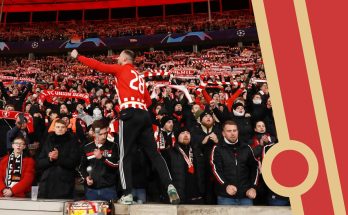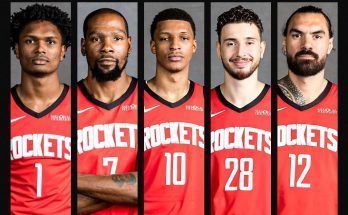Oklahoma Athletics Director Joe Castiglione has recently voiced a strong sense of optimism and confidence regarding the future of the University of Oklahoma’s baseball facilities. In an era when college athletics is becoming increasingly competitive, with programs across the country investing heavily in infrastructure to attract top-tier talent and enhance the fan experience, Castiglione’s remarks indicate a pivotal moment for the Oklahoma Sooners baseball program. His comments suggest that the momentum is building steadily toward securing significant improvements and upgrades to the team’s baseball facilities—an effort that promises to elevate the program’s stature on both the regional and national stage.
The landscape of collegiate baseball has changed dramatically over the past decade. Programs in the Power Five conferences and beyond have realized the importance of modern, state-of-the-art facilities—not only for the benefit of players and coaches but also as a recruitment tool and a means to engage the fanbase. It’s no longer enough to have a solid team on the field; the entire experience surrounding the game must reflect excellence. Recognizing this reality, many universities have made sizable commitments to upgrading their baseball stadiums, training centers, locker rooms, and related amenities. Against this backdrop, Oklahoma’s ambitions and aspirations to enhance its baseball facilities signal a clear intent to compete at the highest level.
Joe Castiglione’s confidence stems from a combination of factors. First, the administration has been actively engaged with donors, stakeholders, and university leadership to build consensus around the need for investment in baseball. These conversations have reportedly been productive, fostering a shared vision of what an upgraded facility could represent—not just as a physical asset, but as a symbol of the university’s commitment to baseball and its student-athletes. The support from the broader Oklahoma community, including alumni and boosters, has been particularly encouraging, laying a strong foundation for the fundraising efforts that will be essential to realize the project.
Another key element contributing to the positive momentum is the strategic approach that Castiglione and his team are taking. Facility improvements in college athletics are complex endeavors that require careful planning, budgeting, and execution. Castiglione’s administration appears to be methodical in its approach, ensuring that the proposed upgrades align with long-term goals for the baseball program. This includes considerations of capacity, modern amenities, technology integration, and player development spaces—all designed to enhance the overall experience for everyone involved. By being thorough and transparent about the process, Oklahoma has instilled confidence among its partners and potential donors.
The envisioned improvements are expected to address several critical areas. The current baseball stadium, while serving the program adequately for many years, faces limitations when compared to some of the newest facilities in the NCAA. Enhanced seating capacity to accommodate larger crowds, upgraded locker rooms to better serve the athletes, and expanded training and rehabilitation spaces are all among the priorities. Additionally, there is an emphasis on improving the fan experience with amenities such as better concession stands, hospitality suites, and modern audiovisual technology. These enhancements are designed to make attending games more enjoyable, thereby fostering greater community engagement and support for the team.
Beyond physical upgrades, the improvements are expected to have a ripple effect on the program’s competitive prospects. Recruiting top talent has become an arms race in college baseball, with players and their families paying close attention to the quality of facilities. A modern, cutting-edge baseball complex signals a program’s seriousness about winning and player development. For Oklahoma, securing such upgrades could provide a distinct advantage in attracting highly sought-after recruits, including high school prospects and transfers. This, in turn, would help the program build sustained success on the field.
Joe Castiglione’s leadership has been instrumental in elevating Oklahoma’s athletic programs overall, and his focus on baseball is no exception. Under his direction, the university has made strides in several sports, balancing competitiveness with academic integrity and community engagement. His statement about being “very confident” reflects not only the tangible progress made thus far but also his personal commitment to seeing the baseball facility project through to completion. This confidence serves as a rallying point for all involved—athletic department staff, coaches, players, donors, and fans alike.
It’s also important to consider the timing of these developments. College athletics has faced numerous challenges in recent years, from financial pressures related to the COVID-19 pandemic to shifting NCAA regulations and the evolving landscape of athlete compensation. Despite these hurdles, Oklahoma has maintained a forward-looking approach, recognizing that investment in infrastructure is critical to long-term success. The momentum Joe Castiglione refers to is, therefore, especially noteworthy because it suggests that the university is not only weathering these challenges but positioning itself for growth and improvement.
Community engagement has been a cornerstone of the effort to improve Oklahoma’s baseball facilities. The program enjoys passionate support from students, alumni, and local fans, and these groups have been vocal about their desire to see the team succeed. By involving these stakeholders in the vision for the new facilities, the administration has created a sense of shared ownership and pride. This grassroots enthusiasm often translates into greater financial support and advocacy, which are crucial components for the realization of such ambitious projects.
Moreover, the proposed improvements are likely to have broader impacts beyond just the baseball program. Upgraded athletic facilities contribute to the overall prestige of a university, enhancing its appeal to prospective students and faculty. A vibrant athletic culture can boost campus morale and foster stronger community ties. Oklahoma’s investment in baseball facilities thus aligns with larger institutional goals related to student life, alumni relations, and regional prominence.
While exact timelines and financial details of the facility improvements have not been fully disclosed, Joe Castiglione’s optimism suggests that significant milestones are within reach. Fundraising campaigns are reportedly progressing well, and initial plans have garnered positive feedback from university leadership. The next steps will likely involve detailed architectural planning, securing necessary approvals, and continuing donor outreach. If all goes according to plan, construction could begin in the near future, ushering in a new era for Oklahoma baseball.
In addition to the tangible benefits, the project symbolizes a commitment to excellence that resonates with everyone associated with the program. Coaches, players, and staff understand that facility improvements reflect the university’s belief in their potential and dedication. This psychological boost can enhance team culture and performance, as athletes feel supported not just on the field but in their overall development. For recruits visiting the campus, seeing a cutting-edge facility communicates a clear message about the program’s priorities and ambitions.
Looking ahead, the momentum Joe Castiglione describes may also inspire further investments in other areas of Oklahoma’s athletic programs. Success breeds success, and visible improvements to baseball facilities could encourage similar projects in other sports, contributing to a culture of continuous enhancement. This virtuous cycle benefits the entire athletic department and by extension, the university community.
In summary, Joe Castiglione’s expression of strong confidence in the progress toward baseball facility improvements at the University of Oklahoma is more than just words—it’s a reflection of substantial groundwork, effective leadership, and a shared vision for the future. These improvements promise to enhance not only the physical infrastructure but also the competitive and cultural standing of the Oklahoma baseball program. With momentum building steadily, stakeholders can look forward to a transformation that will positively impact players, fans, and the broader university community for years to come. As the Sooners prepare to take their place among college baseball’s elite, these upgrades will serve as a cornerstone of that journey.


